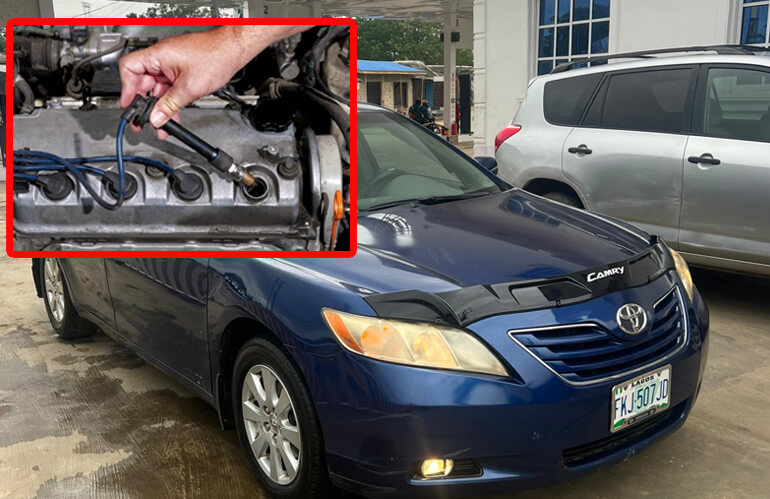- Whether they’ve gone bad or have enough miles on them, you need to change the spark plugs and ignition coils to keep your engine in good shape
- Besides the new parts, you’ll need a torque wrench, spark plug socket, socket wrench, regular sockets, extensions, dielectric grease, and possibly some screwdrivers
- Always hand-tighten the plugs and any screws/bolts first to avoid cross-threading, and be prepared to potentially discover additional maintenance needs
Whether you haven’t changed a spark plug in your car before, with the right information and the right tools, some patience, and plenty of care, replacing your spark plugs and ignition coils doesn’t have to be terrifying.
Table of Contents
How Often Do You Need to Change Your Spark Plugs and Ignition Coils?
Usually, you don’t have to change your spark plugs all that often. Generally, cars need new plugs every 30,000 miles or so, though some plugs can hold on for longer. Ignition coils, though, don’t have a recommended mileage or age. Some last for the lifetime of the car while others conk out after 60,000 miles. Basically, until they go bad, you don’t need to change them.
Speaking of going bad, there are a few signs that foretell spark plug and/or ignition coil failure. The most obvious is an engine misfire or backfire because without working plugs and/or coils, fuel doesn’t ignite properly. Your engine might also idle roughly, burn more fuel, have trouble starting, and make less power or deliver it less consistently. And these symptoms will likely come accompanied by a Check Engine Light.
What Happens if You Don’t Change Your Spark Plugs or Ignition Coils?
On that note, mechanics usually change your spark plugs when you go in for a tune-up. This keeps your engine running smoothly and efficiently, which also extends its lifespan. And it’s the same thing with your ignition coils.
Besides being annoying and loud, misfires and backfires can cause internal engine damage if left unchecked. In addition, a damaged coil can overheat and create an oil leak, experts say. Not only can that lead to fouled spark plugs, but leaking oil can also short out other electrical connections. At that point, a bad ignition coil might be the least of your worries.
Furthermore, age isn’t the only thing that causes ignition coil failure. As the gap between a spark plug’s electrodes grows, so does the energy the plug needs to make a spark. That means the coil needs to work harder, which makes it overheat and fail.
Here’s How You Can Change Your Car’s Spark Plugs and Ignition Coils at Home
Fortunately, you can usually catch these failure signs before your car suffers permanent damage. And while it’s a bit more involved than an oil change, most DIY mechanics should be able to replace their spark plugs and ignition coils.
First, make sure you have the correct replacement parts. You don’t have to spring for the most expensive spark plugs or ignition coils. But make sure the ones you buy have the right specs and fit for your car. Also, if you don’t already know, write down the torque specs for the plugs and any bolts or screws.
Next, assemble your tools. Because this process requires precision, torque wrenches are a must. Plus, in addition to the usual socket wrench, sockets, extensions, and screwdrivers, you’ll need a spark plug socket and gap tool. The former is vital because dropping the plug can damage it and your engine. Hence these sockets have rubber gaskets to securely hold the plugs.
Once you’ve got everything assembled, pop your hood, and disconnect your battery. Then, remove any intakes, covers, etc. until you can see the ignition coils. The next steps will change slightly based on what kind of ignition system your car has.
If you have a distributor or a coil pack system, you’ll see a bunch of thick wires stretching from it to the spark plugs. Meanwhile, my Abarth has a coil-on-plug system, which puts the coil right on top of the plug. Rather than thick wires, each coil-on-plug arrangement is hooked into the wiring harness. Since this is the most common system nowadays, I’ll focus on it for the rest of this guide.
Going one cylinder at a time, unclip the coil from the wiring harness and remove any securing bolts. Then, pull up the coil until it pops out. After that, use your spark plug socket to remove the old plug. Next, after checking the new plug’s gap, start hand-threading it back into place.
Once you’re absolutely sure you haven’t cross-threaded it, use your torque wrench to secure it.
Then, take the new coil, smear a little dielectric grease on the end that connects to the spark plug, and securely re-install it. You should feel a little click when it grips the plug.
Next, screw the retaining bolt back in, once again starting by hand and finishing with the torque wrench. Finally, re-install any intakes, covers, etc. you’ve removed and re-connect the battery. And that’s how you change your spark plugs and ignition coils, folks.
Conclusion
Changing your car’s spark plug and ignition coils at home is possible. However, it requires some patience and learning. Sometimes you might not get it right the first time. But with practice, you will. Also, learning some car DIYs will save you so much money spent at the mechanic.
Have 1 million naira and above to Buy or Sell Cars In Nigeria? Check carlots.ng
All rights reserved. Reproduction, publication, broadcasting, rewriting, or redistribution of this material and other digital content on carmart.ng is strictly prohibited without prior express written permission from Carmart Nigeria - Contact: [email protected]







